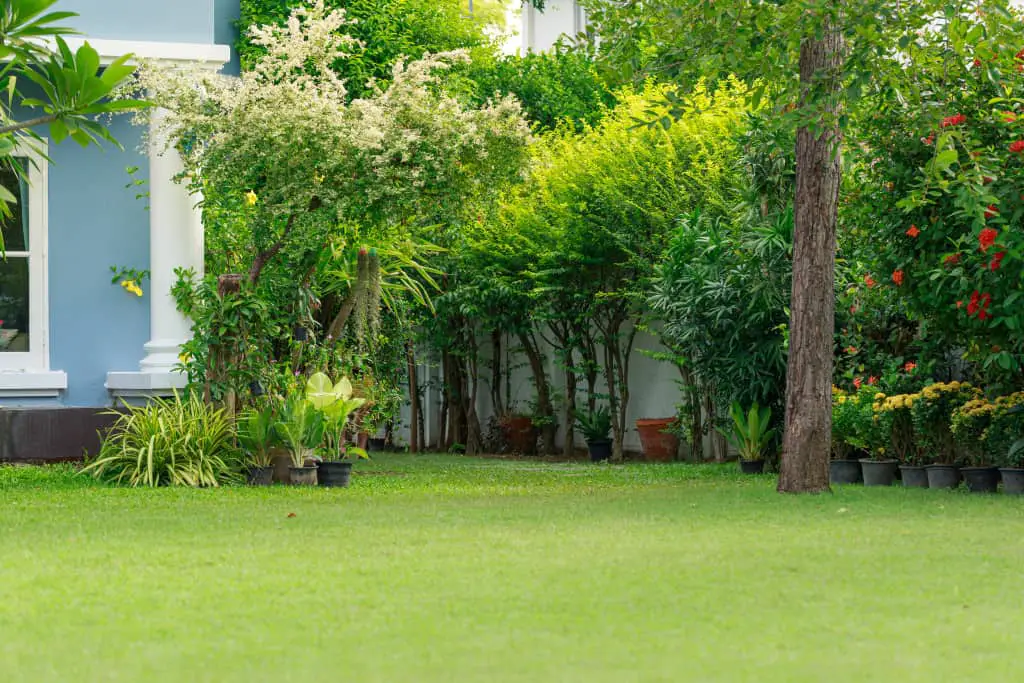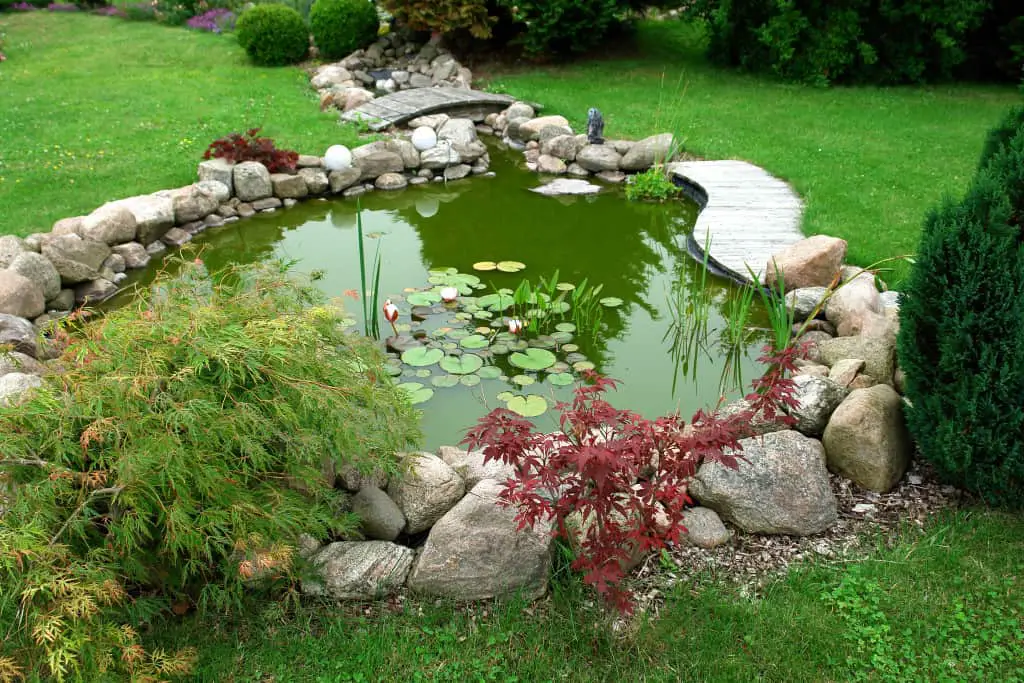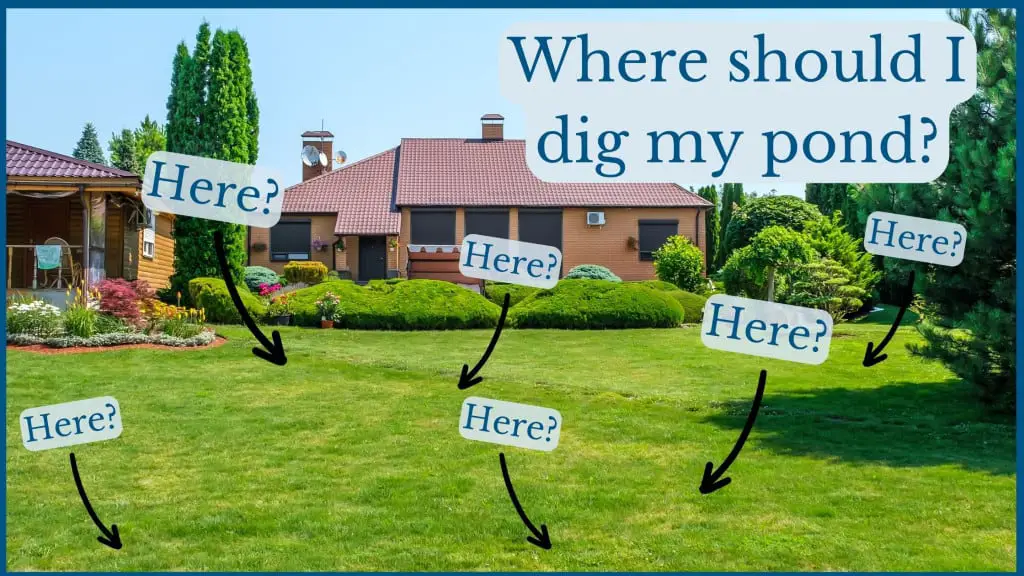When choosing a location for a garden pond, there are quite some factors to consider. These factors depend not only on your enjoyment of the pond but also relate to the ease of construction and reduction of maintenance. Here are the main factors to keep in mind:
Table of Contents

Factors to consider for the placement of your garden pond
Visibility
If you plan to build a pond to enjoy its beauty and to enhance the cachet of your property, you should aim for a location with a high visibility from your home or any outdoor areas like a deck or patio. This way, you can sit and watch the pond, either from indoors or out in the backyard, and it’s a relaxing way to pass the time. If the cachet of your property is important to you, you may also focus on the visibility when entering the property.
Sunlight
A location that has morning sun and afternoon shade is optimal for a garden pond because it allows for sunlight while avoiding the afternoon full summer sun and heat. Many popular aquatic plants need at least five or six hours of sunlight each day to grow and flower.
Ponds located in the full sun with no shade available during any time of the day can cause the water temperature in the pond to rise, reduce oxygen levels in the water, and increase the likelihood of algae bloom.
If the pond location receives full sun all day long, you can install a shade sail or construct some sort of deck or canopy over (part of) the pond to reduce the sun during the afternoon. A deeper pond and floating plants (water lettuce, duckweed), also provide some protection against an undue rise in temperature of the pond water.
Trees
Large trees provide shade, but the leaves from these trees falling into the pond can be a real nuisance with a substantial charge on your maintenance efforts and water quality management. It’s consequently preferable to have your pond located away from large trees, especially deciduous trees. Tree roots growing underneath the pond can also become troublesome.
If the only spot available is near a tree, it’ll just mean some extra maintenance to remove the leaves. You can retain the leaves before they fall into the pond, by suspending a net just above the pond (particularly during late summer and autumn).
Wind
Windy unprotected areas will result in water loss from the pond if you have a water fountain or spouting water features. A further problem is that leaves and dirt may get blown into the pond. A solution is to provide a windbreak on the side of the prevailing wind direction with small trees, shrubs, and fences. This will reduce the wind over the pond and retain dirt before it gets blown into the pond. If necessary and possible, this structure may be combined with the sun canopy proposed previously.

Flat ground level
Locating the pond in a flat area is ideal, but you should avoid low areas without surface drainage that are likely to flood during heavy rain. Flooding a pond with surface runoff is a major catastrophe for any beautiful and well-managed pond.
Even if the pond location is not a low area, you should prevent any inflow of surface water because it constitutes a high risk of flooding your pond. Moreover, surface water is nutrient-rich and will cause water quality problems.
If the terrain is somewhat sloping, you must construct a level platform before you start excavating the pond itself. If you create a terrace, it is recommended that you remove the arable topsoil first (about 3/4 foot) and keep it separate for later replacement when the pond is installed. You then create a flat terrace with the subsoil, either by exclusively excavating or by excavating the high ground and backfilling the low.
If you backfill the low, you should compact it as well as you can because poor compaction will cause problems with uneven settlement later. Be aware that a large pond on sloping terrain requires significant preparatory earthworks. You may need a plan to place or remove the excess earth. Even with a terrace, any rain that falls outside the pond should drain away from the pond.
Avoiding damage to underground utility lines
You should exclude the presence of any underground utility line (gas, water, power, cables, sewer) before excavating for a pond. In the USA, you just call 811, and they will contact the utilities for you, and a representative will visit you in a few business days to mark any existing (or planned) utility lines.
811 also provides guidance on the safe distance from the different utility lines. Outside the USA, you can contact the utility providers that serve your home, but surprises that have nothing to do with your residence are always possible.
Electricity outlet
Even if you plan to power all pond accessories with solar, it is very practical to have a power outlet in the vicinity for enjoying leisure time and you never know what tools you may need. If there is no outlet, it may be worthwhile to have one installed. Unless you know what you are doing, you may contact a qualified electrician for the job. Choose a location that already has a power outlet, or that allows for an outlet to be installed.

Managing the pond water level
We already mentioned that you should prevent any inflow of surface water because of the risk of flooding and its damage to a stable pond ecosystem. You should further consider that you must fill the pond with water, preferably rainwater, for the first time and then top up at regular intervals during the summer months at least.
Is there any possibility that you can connect the fall pipe from the gutters of your house or another building to the pond either directly or via a reservoir? If this is not a viable option, you can use tap water, but if it contains chlorine, you must let it stand for at least a day before you add it to a stable pond ecosystem.
If you have (or plan) a borehole you should be aware of the water quality, particularly nutrients and potentially toxic substances. Even when there is no surface water inflow, it is likely that you must reduce the water level of the pond at some stage, either from heavy rain or when you want to exchange some water.
Whether you have an overflow (pipe or weir) on the pond or not, you must consider where to release the excess water. If you can use it to water your garden, that’s perfect because the nutrients are a natural fertilizer. An infiltration area on your property is also fine. You may likely require authorization if you plan to drain excess water on a municipal sewer or any open water. Choose a location that facilitates the management of the pond water level.
Before you go!
As you see, there is quite a lot to consider and any spot you select is likely to have some drawbacks. Fortunately, there is always a solution at hand.
We further recommend to use Google earth for site selection on large properties. It is a useful and free tool that provides an excellent view of the site at any scale and it allows you to take reasonably accurate measurements, to sketch in the pond area, and to generate longitudinal profiles along any pathway to locate existing drainage patterns. (Google Earth download: https://earth.google.com/download).
We trust that this review will help you to find the perfect location for your garden pond.
Please be aware that the construction of a pond on your property may require authorization from your municipality or a water management authority.

